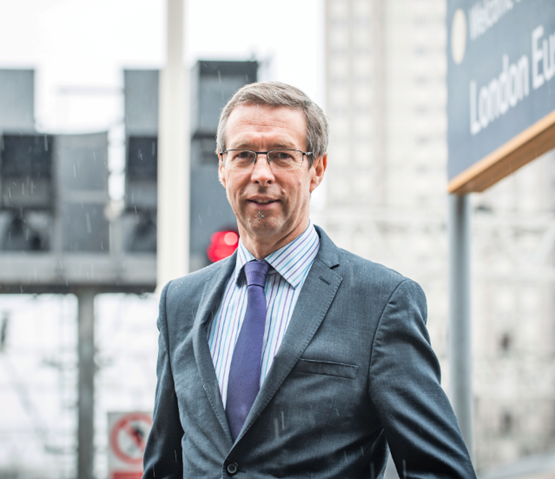 Read the peer reviews for this feature
Read the peer reviews for this feature
“At this stage, I’ll probably be giving you the questions rather than the answers,” says Rob Brighouse as we sit down to conduct his first media interview since his appointment in December to chair the Department for Transport’s Shadow East West Rail Company.
But after an initial nervous pause, he is quick to qualify this inauspicious opening gambit with a reassuring smile, and then provide ample evidence that he is already hard at work executing his demanding new brief.
His task is twofold: to breathe new life into the ponderous construction of the proposed 75-mile East West route between Oxford and Cambridge, while spearheading Government plans to throw train operations and infrastructure management firmly back together.
East West Rail (EWR) will design, build and then operate the line - as an independent, vertically integrated organisation hitherto unseen on the rail network in the post-British Rail era.
It therefore marks an abrupt departure from the monopoly enjoyed first by Railtrack and then inherited by Network Rail, after it took track authority back into public ownership in 2002, while also representing a large extension of the control currently granted to franchised operators.
Yet despite this key structural change, Secretary of State for Transport Chris Grayling has already made it clear that EWR will not herald the beginning of the wholesale break-up of NR. Nor does he seek to abandon the central tenets of the privatisation settlement devised by John Major’s Government more than two decades ago.
Instead, EWR is intended to help remedy the perceived shortcomings of a track operator mired by reputational damage (caused by soaring costs and project overruns such as the much criticised electrification of the Great Western Main Line), and to make NR behave more like the private company it seeks to emulate.
It is intended to quicken the pace of progress being made to induce the change necessary to transform NR into a more customer-orientated and financially disciplined organisation.
Devolution, cost cutting and the introduction of private finance has long been the agreed formula to achieving these aims, yet Grayling would like to see greater momentum being registered along this pathway, it having been recommended first by Sir Roy McNulty’s report in 2011, and then by Nicola Shaw’s five years later.
Deep alliancing between NR and contractors has been tried and tested to deliver individual enhancements, while integrated operating teams are set to be introduced to the new East Midlands and Southeastern franchises starting their procurement this year (to be awarded and commence in late 2018). But Grayling will hope to have found his winning hand in EWR, by setting a benchmark for NR to follow in the efficient construction and operation of infrastructure, and by entrusting all aspects of its delivery to the private sector.
Brighouse will now closely examine how this will work in practice, before announcing the next steps for creating a fully-fledged EWR at the end of March.
“My first few weeks has been to assemble a really good team, and to decide all the questions and people we need to talk to,” he says.
“The first three months is then to do a detailed analysis and answer the three fundamental questions put to me by the Secretary of State , which are: What is the scope to reduce cost? What is the scope to accelerate the programme? And, very importantly, how can we lever in private finance and to what extent can that bring vertical integration?
“They’re all questions, not answers. So at the end of the three-month period, I’m hoping I’ll have at least more clarity on those three questions, and can then decide how we can take the project forward.”
Unsurprisingly, details remain scarce on the finer points of a delivery model that has no precedent in the 21st century. Nevertheless, there are some obvious operational questions for Brighouse, including how EWR will interface with NR where the routes physically connect but will be under separate jurisdictions.
I also ask what the new timeline might be for delivery of the line’s disused western section between Oxford and Bedford (originally slated for completion in Control Period 5, 2014-2019), and if he can tell me whether a final route has been decided for the missing central section between Bedford and Cambridge. Will EWR have its own procurement system and directly tender and manage its supply chain? How will investors achieve a financial return?
Brighouse once again points to the three-month scoping study he has been commissioned to produce. He is an experienced handler of the media, so there is little point in trying to second guess what conclusions he’ll make, or trying to tease out anything else before he’s ready to formally share his findings.
“It’s a study from which I’ll make my recommendations,” he continues. “You can try, but you won’t put words in my mouth. I need to have an open mind, and at the end of March I’ll come up with my thoughts and recommendations on what is the most effective delivery mechanism for this.
“I don’t want to disappoint you, but the key is what I’ll say in March. So you should talk to me again and ask those sorts of questions then.”
Feeling a little deflated, I turn to how Brighouse personally feels about the scale of the task ahead of him, and the role he will play in wresting control over enhancements away from NR and its Infrastructure Projects group. I will return later to the added twist and the perceived conflict created by his continued presence on NR’s executive board, but first he delivers a typically sanguine answer for a man well-known for his positive disposition.
“There are never problems, only opportunities, and that is my philosophy on life. It’s a real pleasure doing this, and it absolutely fits in with what I’ve done throughout my career. I’ve worked for British Rail, I’ve worked in Australia looking at rail projects, I’ve worked in Hong Kong, I’ve worked in the private sector, and I’ve done some work for NR on the board. So it actually gives me a real opportunity to bring all that experience together.
“I’ve seen different ownership structures, different funding structures, and it gives me an opportunity to look at all that and see how we can get the best possible deal on this project.
“It’s a challenge, but a lovely challenge. I don’t underestimate it - it is a big job. But with the right attitude and the right approach, with strong government support and direction, I’m sure it is something we can do well.”
Crucially, Brighouse also has direct experience of East West, and of working closely with NR on one of its most successful past forays into public-private delivery of rail infrastructure.
After joining Chiltern Railways in 2000, Brighouse led the delivery of the Evergreen 1 and 2 projects as projects director, and then Evergreen 3 once he had returned for a second spell at Chiltern as Managing Director in 2011. Focusing on the Chiltern Main Line, a key element of the Evergreen upgrades was the construction of a new rail link between London Marylebone, Bicester and Oxford - it fully opened in December 2016, and will eventually share its metals with EWR.
Brighouse left Chiltern in 2015, before being appointed a non-executive director at NR in January 2016. But his legacy endures, as the Bicester-Oxford section remains the only part of the EWR route between Oxford and Bletchley currently open to passenger services. It was also delivered under a joint financing agreement between Chiltern and NR, whereby the operator committed £130 million of private capital to the overall £290m cost. The impact of Brighouse’s achievements at Chiltern was memorably recognised last year when he was awarded RAIL’s National Rail Award for Outstanding Personal Contribution (Senior Management).
He adds: “I can draw on the Evergreen 2 experience . I led that, and we delivered it on time and on budget. And when I say that, I mean the original programme from the day we started, not programme version six or seven. It was helpful for NR because it was benchmarking the private sector doing some of it versus NR-only, so it was good experience for me delivering that.
“I left Chiltern and worked on London Overground, but came back when we were building the line to Oxford, and again that was different because we did it in partnership with NR. So I’ve seen a series of models here, and I’ve worked overseas for some time as well. I’ve seen railway projects from a number of different angles, and obviously that helps inform the work I’m doing at the moment.”
Unsurprisingly, Brighouse is not alone in compiling the wide-ranging scoping report for EWR, and he has quickly assembled an able four-person team to assist him in this commission. It is being led by Phil Verster, who officially leaves his position at ScotRail to become managing director at EWR later this spring, but who has already started liaising with his new boss.
Brighouse explains how the relationship will work between chairman and MD, while paying tribute to the array of talent that now surrounds him. After all, before any physical construction can begin, EWR will need to first obtain legal permissions to build, and then find over a billion pounds in funding. This task will call on a diverse range of skill sets.
“I have a team covering all aspects - the end user requirement, the engineering and operational requirement, the financial side of things, and the legalities of bringing together an organisation to that.
“I recruited Phil to the team because he has a great operational background, he has an international background, and he knows infrastructure, so he’s a great guy to lead the team.
“Phil is working to me and my remit, and manages three other people. So I speak to Phil every day, and I’m with him every week to make sure we’re answering the questions put to me by the SoS. Phil is managing down and all of those inputs, and what I’m doing is managing up and out and dealing with the private sector, investors, National Infrastructure Commission, and dealing with all the various arms of Government to make sure what we’re doing is consistent with economic policy.
“I also have Stephen Barker, who used to work with me when I was MD of Chiltern. He was intimately involved in the line through to Oxford and he’s a chartered engineer, but also brings in a live operator perspective.
“Then there’s Chris Nicholson, who is from KPMG initially but not anymore. He’s also worked as a special advisor to a cabinet member in the past, so he understands the process of government and he has a great grasp of finance.
“Also there’s Karen Letten, who currently works for the DfT and is a lawyer, but who has great experience in corporate financing. She is a non-core member of the team, but is facilitating all the necessary DfT inputs.
“But to be clear, I’m doing this as Rob Brighouse running a project, and not as an NR employee that sits on the board. I don’t see any inconsistency between the two because I know what’s going on within NR and outside, too.”
That partially answers my next question, which is how Brighouse plans to reconcile his new role at EWR with the non-executive directorship he has held at NR since January 2016.
If successful, EWR is intended to provide a powerful benchmark for NR that is widely expected to expose gaping flaws in NR’s scoping and procurement processes as well as cost control. Could Brighouse suffer from any divided loyalties? Cynics might point to a temptation to inflate costs at EWR in order to limit collateral damage to NR, fatally undermining its benchmarking strategy.
“Cynics would say that, but happily I’m not a cynic and happily nor is Sir Peter Hendy, so I have carte blanche to challenge what NR is doing and draw good comparisons,” he swiftly replies.
“I checked out if there was a conflict of interest and there’s not. I clearly delineate what I’m doing with this project versus what I’m doing on the NR board as non-exec director.
“I don’t want anyone to get confused - this is a separate piece of work from my board role. I’m working for the SoS absolutely, no ambiguity, and doing a piece of work for him. My knowledge and connections to NR help me do that piece of work but I don’t report to Sir Peter Hendy, I report to the SoS.
“NR has a key input to play because it holds an awful lot of information and they have some really good people doing some really good work. So I’m drawing on that work - but not as an NR employee, but as the SoS’s agent to do this piece of work.
“From an NR point of view it is good and positive because it will provide a degree of benchmarking - we will establish what these projects should cost, and how long they should take. That will be a really helpful benchmark for NR to compare with what they’re doing, and I have 100% support from Sir Peter Hendy and Mark Carne for what we’re doing.”
He adds: “When you produce a benchmark, which is what I hope we’ll do, you produce a benchmark for a reason, don’t you? And that is to say: ‘there are better and more effective ways to do things’. I’ll say again that Peter Hendy and Mark Carne are really keen to establish that benchmark and see what NR can learn from it.
“Peter is always very keen to see how we can bring private finance into this industry. The thinking is ‘he who benefits pays’, and so that’s what I’m looking at - how can we make sure that the beneficiaries of rail projects are also the funders of those projects? That’s what this will be about, to a large extent.”
Finance is something I try and follow up with Brighouse, but as funding EWR from exclusively private finance is somewhat virgin territory for UK rail, there is little he will say ahead of the scoping report.
He confirms, however, that various models of DBFO (Design Build Finance Operate) are being considered. This could mean that infrastructure is owned by an institutional investor, for example, and then operated as a concession or on an open access basis, perhaps like High Speed 1. Other models of DBFO might result in the investors operating services themselves.
Brighouse is not ruling anything out: “We’re talking about the potential for DBFO. Now, DBFO can be all things to all men, so you can have a DBFO mechanism whereby an investor has a very small team, funds the projects, and then contracts everything out. Or you could have a DBFO mechanism where actually an investor provides the drivers on trains, and then there’s a whole range of other things. Who operates the trains? Who maintains the infrastructure? Who regulates the infrastructure? And again I’ll be looking into a whole range of options.
“I’m talking to people who are interested in being funders, to establish where on the scale is the optimum solution to bringing in third party funding. I’m sorry, but at this stage I can’t tell you what the answer is - I just want to see what’s out there. But if anyone wants to see me, here I am.”
An added complication to the development of a strategy and delivery mechanism for EWR is the construction and development work that is already under way, and which involves NR on the western and central sections.
Evergreen 3 ensured that Western Phase 1 fully opened between Oxford and Bicester in December 2016, but Phase 2 between Bicester and Bedford is currently in development and publicly funded for completion by the end of CP6 in 2024.
Grayling would like to see this work accelerated, privately funded and placed under the leadership of EWR, but not at the risk of reversing any progress made by East West Alliance (EWR2, comprising NR, Atkins, Laing O’Rourke and VolkerRail). EWR2 is engaged in vegetation clearance and is working on an outline construction programme, while NR has also been leading the planning of the East West route’s central section between Bedford and Cambridge, where final routing decisions are yet to be taken.
These are not intractable problems, but a reminder for Brighouse of how far EWR will be required to innovate in order to displace NR’s control over the project.
How does he plan to achieve this? You guessed it…we must wait, and all will be revealed.
“I believe the guys in the alliance and in the central section team are doing a good job, so I need to dig into what they’ve done and see how we can incorporate their work into what we do going forward. Obviously in doing all this I need to be mindful of existing programmes and interfaces, and in looking at things as a whole I want to be careful I don’t jeopardise progress on the western section as it stands. I want to be careful I don’t jeopardise the interface with HS2 at Calvert, and so I need to balance all those conflicting elements to make sure we come up with the best solution for the whole project, so there might be trade-offs.
“One of the key interfaces with NR is the alliance, and they’re doing a lot of work at the moment on the western section in stage 2. We’re looking at that work and getting a handle of timescales and costs, and seeing if there are any areas we can explore to accelerate and bring down costs.
“We’re talking to the central section team over any issues and decisions around that, where we can seize on the opportunity to bring in some private funding.”
He concludes: “Will I come up with a definitive ‘this is what we’re doing and this is how we’re doing it’ at the end of March? Or will I come up with one or two options of ways it could be done? I tend towards the latter, I think.”

I share Rob’s excitement about the opportunity that is East West Rail. There is a sense of liberation that comes from being able to design a delivery model unencumbered by the corporate systems of Network Rail, and with political backing for any answer provided it is radical, effective, and draws in private finance. No surprise that Rob won’t be drawn on the details of the answer now - why would he box himself in? Besides, he genuinely won’t know yet the detail of what emerges as the best approach, although as part of an experienced and smart team, they will have a few hunches.
There are three prizes to be grasped.
First, a cost and time efficiency benchmark to Network Rail. That is a laudable aim, but I will wager now that it will be hard in the end to trace a like-for-like comparison. Leaving aside that every scheme is different, the intention to procure East West Rail on a vertically integrated basis means that what will be bought is a whole-life cost.
You only have to look at the political furore over PFI to see how hard it is for politicians, the public, the media or indeed businesses to properly differentiate a cost commitment just to build something from the cost commitment to build, maintain and operate. But buying on the basis of whole-life cost is absolutely the right thing to do (a point shortly to be reiterated by the Infrastructure Client Group, whose members include Network Rail, in its Project 13 manifesto). As well as driving out the long-term efficient cost, there is also scope to lock in (through a DBFO or similar contractual mechanism) the funding to ensure that the line is properly maintained throughout its life.
Second, a contribution from land value capture. This is an area of interest not just in the UK, where KPMG recently completed a comprehensive study of potential mechanisms for Transport for London, but also globally.
To my mind it is right, as a matter of public fairness, that if Government (taxpayers - you and me) pays for a piece of new infrastructure, some (or dare I suggest all) of the windfall gain that accrues to proximate landowners as a result of that infrastructure should be captured. But let’s not get carried away with how significant this might be in the context of a £1 billion scheme. Rob says that to a large extent the project is about making sure that the beneficiaries of rail projects are also the funders. Dream on! With the sole exception, I suspect, of the Heathrow Express, there is not a railway in history that has made money without public subsidy.
Third, the involvement of private finance. There are two good reasons for that, the first of which is because the risk of losing a lot of money concentrates the minds of private backers in a way that tends to drive innovation in execution and effective management in operations.
Not always, of course, before you start shouting Metronet at me. But take Thames Tideway as an example. It is the desire of the private investors to mitigate their risk on the project that has led Andy Mitchell and his team to renegotiate the construction contracts in order to shorten the project programme, taking a commercial view to pay more upfront to reduce risk exposures in due course.
The second reason is because private finance is the way of spreading the upfront build cost of the scheme over time. That matters because infrastructure is inherently inter-generationally unfair, or at least any one scheme is when taken in isolation. We as taxpayers will pay the cost of HS2 now, but the benefit will accrue to our children and our grandchildren, in the same way that we benefit today from the legacy of investment by the Victorians, in our railways, roads, sewers and public buildings. Ideally we would altruistically accept that as we have benefited, so we will invest. But when public funding is tight, any solution which defers some of the cost to the future is welcome.
So how might East West Rail ultimately be delivered? Since Rob is not at liberty to speculate as to the likely solution, perhaps I may offer some observations.
Firstly, there is no shortage of private capital, both debt and equity, for infrastructure projects. But generally that capital prefers low risk for low reward. A scheme needing £1bn-plus will struggle to access that money on terms that the public and politicians will regard as acceptable, unless the risk to investors is minimised.
Secondly, rail is seen by investors as high risk. It is operationally complex. It has interfaces with other parts of the railway that introduce risks you cannot control. Modern trains and signalling systems are a technology risk. So something will have to be done to mitigate that risk. Either particular risks are separated out, which undermines some of the vertical integration logic, or some form of regulatory and/or Governmental risk mitigation is put in place.
That was the thought process we went through when KPMG and Linklaters were advising Thames Water on the structural solution for Thames Tideway. We analysed every model from pure privatisation to public funding and procurement, and you can see for yourself where we ended up. There was initial resistance in the Treasury, but the inescapable logic of the answer carried the day. If we as public citizens want complex infrastructure funded and built by the private sector, we either have to accept there is a high price tag for that risk, or use the country’s balance sheet to mitigate some of that risk.
Thirdly, vertical integration is a siren. Given some of the challenges post-BR privatisation, it has a sort of alluring charm. But building and maintaining a railway, building trains and operating a railway are not obviously similar skillsets, and in the private sector they are distinct capabilities and distinct corporate entities with very different balance sheets and risk appetites. Force them together and you may get the appearance of an integrated business, but inside the Kinder Egg there will still be three separate toys.
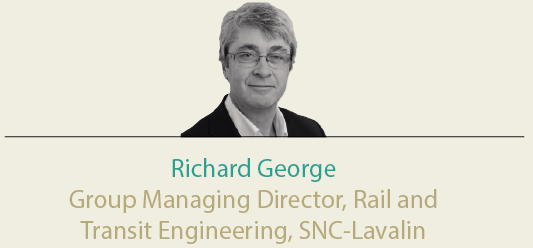
I was very interested to hear what Rob Brighouse had to say, and was delighted to find that what he did say was
predictable and held few surprises.
Delighted? Yes. His assessment of the position was as sound, thoughtful and considered as I would expect from him, and there were no major surprises. I like that - it means I can carry on planning how my organisation may respond in a way that has not had any inconvenient spanners thrown into the works, I look forward to seeing what he has to say when the report compilation is over at the end of March, and he has formulated his recommendations. I am optimistic that there will be some good things to come out of it.
Having said that, there is a good deal of complexity lurking in here. The route, the relationships, the contract framework, the financing, the timing and impact on other schemes - all seem to have their individual problems, and all need answers that match with each other. Together they add up to a ‘small-scale’ railway, but some ‘large-scale’ issues.
I have no issue at all with Rob’s approach. Set out the problems clearly - tick. Get a good team alongside you - double tick. Agree roles - tick. Agree timescales with the client - tick. What I do have some issue with is not his and his team’s ability to deliver any of this, but the notion that a railway of this scale will actually teach NR or the DfT a great deal about anything very much.
We know that you can put in place different financing and ownership arrangements - we do that on a regular basis all over the world. But taking a railway of this size as a model to compare NR with misses the point.
The problem for NR on a daily basis is scale. It is an immense operation, and I am far from convinced that anything that is done on East West Rail will necessarily be scalable up to the national level. At best it will serve as a useful example of how individual parts of the railway might be built and operated with new arrangements - but necessarily thinking that wider application will solve national-scale problems, I remain sceptical about. I truly hope that it is a great success and that I am wrong about wider lessons. Good luck guys.

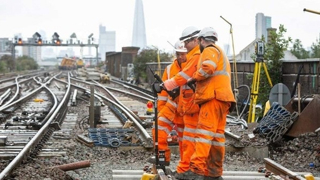
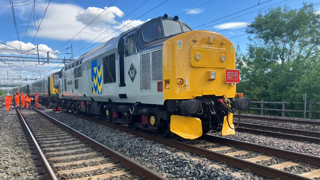

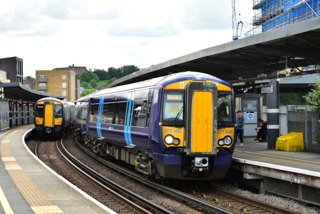
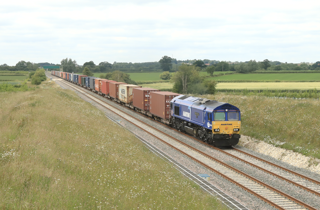










Login to comment
Comments
No comments have been made yet.